A Look of the Old City<br>A Tour of Dadaocheng Heritage Architecture
Li Chun-sheng's father was a Christian, and young Li followed in his footsteps. Gifted in both written and spoken English, he worked for British merchants, interested in their international trade and the buying/selling of tea. In 1869, he went into business as a partner with an Englishman, sending a cargo of local tea to New York by sail, thus opening up the Taiwan tea trade, which would flourish for decades thereafter. The Li Chunsheng Memorial Church was inaugurated in 1937; it is opened to the public for Sunday services, but closed at all other times.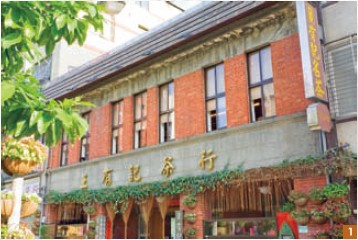 The Taipei neighborhood of Dadaocheng has quite a past. Located on the city's west side by the Tamsui River, this riverport area was a rich commercial enclave in the early years of Taipei. Today, it remains rich in evidence of these glorious boom times, in the form of resplendent heritage buildings in Chinese and Western styles, left behind by Chinese merchants, intellectuals, and artists, along with Western merchants. Dadaocheng is a museum of living history, a fascinating destination for overseas travelers to get a glimpse of the soul of this metropolis.
The Taipei neighborhood of Dadaocheng has quite a past. Located on the city's west side by the Tamsui River, this riverport area was a rich commercial enclave in the early years of Taipei. Today, it remains rich in evidence of these glorious boom times, in the form of resplendent heritage buildings in Chinese and Western styles, left behind by Chinese merchants, intellectuals, and artists, along with Western merchants. Dadaocheng is a museum of living history, a fascinating destination for overseas travelers to get a glimpse of the soul of this metropolis.A Centennial Pedigree for Wang Tea
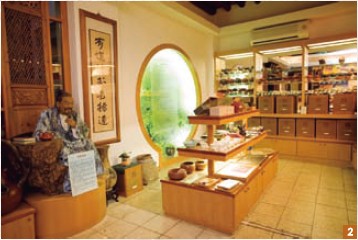 The Wang Tea tea-factory building is a Dadaocheng architectural landmark that has now surpassed the hundred-year milestone. The firm's forerunner was Wang Teahouse in the city of Xiamen, across the Taiwan Strait in China, which moved the shop to Taiwan in 1907. At that time, Dadaocheng was a key location in the tea trade, and Wang Tea Enterprise Co. was opened as a tea-refining operation for north Taiwan Baozhong tea that was then exported to Thailand. The simple red-brick structure, constructed in the Minnan style -“Minnan” means “Fujian South,” from whence the ancestors of most Taiwanese came - has been through many a transformation since, and today the tea factory features a shopfront façade that leads you into a space dedicated to traditional tea refining, with a cultured quarter set aside for the learning of the tea-drinking arts. The house's mission is to bring knowledge and appreciation of refining techniques and tea-appreciation skills to a wider audience.
The Wang Tea tea-factory building is a Dadaocheng architectural landmark that has now surpassed the hundred-year milestone. The firm's forerunner was Wang Teahouse in the city of Xiamen, across the Taiwan Strait in China, which moved the shop to Taiwan in 1907. At that time, Dadaocheng was a key location in the tea trade, and Wang Tea Enterprise Co. was opened as a tea-refining operation for north Taiwan Baozhong tea that was then exported to Thailand. The simple red-brick structure, constructed in the Minnan style -“Minnan” means “Fujian South,” from whence the ancestors of most Taiwanese came - has been through many a transformation since, and today the tea factory features a shopfront façade that leads you into a space dedicated to traditional tea refining, with a cultured quarter set aside for the learning of the tea-drinking arts. The house's mission is to bring knowledge and appreciation of refining techniques and tea-appreciation skills to a wider audience.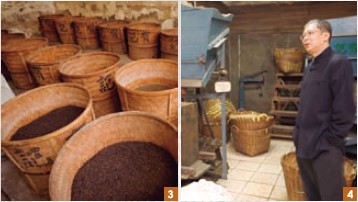 The first floor, where traditional-style tea processing was practiced, is a treasure vault of the machinery and implements of the old days. On the second floor, the space that was used for the hand-sorting of leaves, a painstaking task performed primarily by young females, is today a space of arts and culture activities. On Saturdays, come on over to enjoy traditional-style nanguan music here, a style traced back to old Fujian, played on traditional-style instruments. Wang Lian-yuan, a member of the fifth generation of the Wang Tea founding family, is devoted to promotion of the tea arts and spreading knowledge of their cultural history, ensuring the Wang Tea complex of today is as filled with life and vigor as the busy tea facility of yesteryear.
The first floor, where traditional-style tea processing was practiced, is a treasure vault of the machinery and implements of the old days. On the second floor, the space that was used for the hand-sorting of leaves, a painstaking task performed primarily by young females, is today a space of arts and culture activities. On Saturdays, come on over to enjoy traditional-style nanguan music here, a style traced back to old Fujian, played on traditional-style instruments. Wang Lian-yuan, a member of the fifth generation of the Wang Tea founding family, is devoted to promotion of the tea arts and spreading knowledge of their cultural history, ensuring the Wang Tea complex of today is as filled with life and vigor as the busy tea facility of yesteryear.Li Chun-sheng Memorial Church
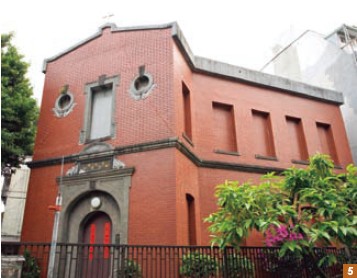
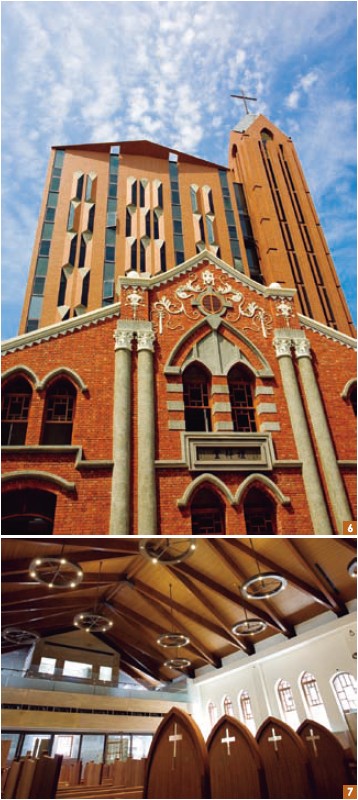 At the head of Guide St. is a collection of fine old teashops. As you move along, next coming into view is the striking Li Chun-sheng Memorial Church. Back in the late Qing Dynasty, this was a post-office branch. Today, the building's name commemorates the “father of Taiwan tea”. The two-story redbrick structure was done in Baroque styling that evokes an air of classical elegance. The original oeil-de-boeuf (bull's eye) windows are still in place, looking out placidly over an ever-changing Dadaocheng.
At the head of Guide St. is a collection of fine old teashops. As you move along, next coming into view is the striking Li Chun-sheng Memorial Church. Back in the late Qing Dynasty, this was a post-office branch. Today, the building's name commemorates the “father of Taiwan tea”. The two-story redbrick structure was done in Baroque styling that evokes an air of classical elegance. The original oeil-de-boeuf (bull's eye) windows are still in place, looking out placidly over an ever-changing Dadaocheng.Dadaocheng Church
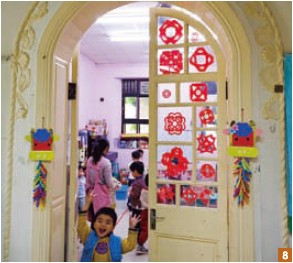 The Li Chun-sheng Memorial Church and the Dadaocheng Church have a special kinship. The latter, which was designated an official city heritage site in 2002, was built in 1915 on the land donated by Li, christened the Dadaocheng Presbyterian Church.
The Li Chun-sheng Memorial Church and the Dadaocheng Church have a special kinship. The latter, which was designated an official city heritage site in 2002, was built in 1915 on the land donated by Li, christened the Dadaocheng Presbyterian Church.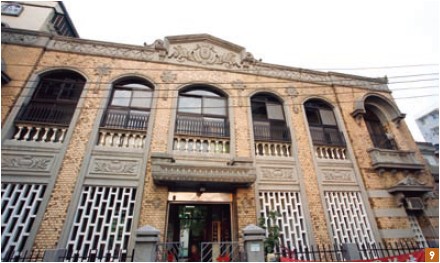 Before the church was constructed, Li traveled to visit Western missionaries in Xiamen to inspect the church architecture there. When he returned, he personally supervised the work. The building is constructed of ganged red brick. The façade soars with the use of Western-style gables and studs, adorned with terrazzo decorative embellishments in both Western and Chinese motifs. The solemn and sedate facility is a premier example of the original architectural styling that emerged in Taiwan in the early modern era. After nearly five years of expansion and renovation work, the church was proudly reopened for public visits in May, 2009. The church is opened to the public for Sunday services, but closed at all other times. However, the facility will be made available to the general public for wedding ceremonies and visits with advance reservation. Application forms for them can be obtained from the church.
Before the church was constructed, Li traveled to visit Western missionaries in Xiamen to inspect the church architecture there. When he returned, he personally supervised the work. The building is constructed of ganged red brick. The façade soars with the use of Western-style gables and studs, adorned with terrazzo decorative embellishments in both Western and Chinese motifs. The solemn and sedate facility is a premier example of the original architectural styling that emerged in Taiwan in the early modern era. After nearly five years of expansion and renovation work, the church was proudly reopened for public visits in May, 2009. The church is opened to the public for Sunday services, but closed at all other times. However, the facility will be made available to the general public for wedding ceremonies and visits with advance reservation. Application forms for them can be obtained from the church.Koo Family Salt Hall
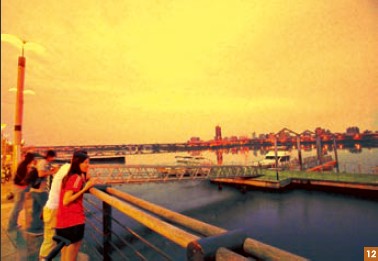 The fortunes of Taiwan's powerful Koo family arose during the Japanese colonial period (1895-1945), as a result of actions taken by renowned business figure Koo Xian-rong. The grand family residence, built in Dadaocheng in 1910, served as both residence and office. Koo's son, the famed business and political figure Koo Zhen-fu, was granted a monopoly on the island's salt sales by the Japanese, and the residence came to be called the Salt Hall.
The fortunes of Taiwan's powerful Koo family arose during the Japanese colonial period (1895-1945), as a result of actions taken by renowned business figure Koo Xian-rong. The grand family residence, built in Dadaocheng in 1910, served as both residence and office. Koo's son, the famed business and political figure Koo Zhen-fu, was granted a monopoly on the island's salt sales by the Japanese, and the residence came to be called the Salt Hall.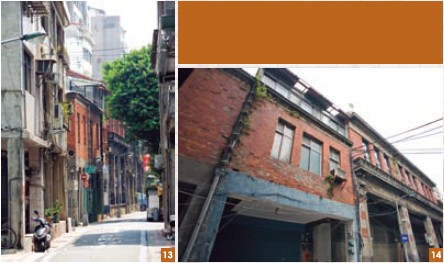 The mansion's appearance is sumptuous and palatial, giving today's onlookers a clear look into the style and taste of yesteryear's elite. Facing Dadaocheng Wharf, what is today formally called the Koo Family Salt Hall is a fine example of late Renaissance style, sporting an attractive facade of ivory-colored tile. According to the head of the preschool that is now in charge of the building, Taiwan's first private children's choir was established here just after WWII. The splendid facility is not open for public visits, but contemplation while standing aside will make clear just how glorious the mercantile prosperity of this thriving community was.
The mansion's appearance is sumptuous and palatial, giving today's onlookers a clear look into the style and taste of yesteryear's elite. Facing Dadaocheng Wharf, what is today formally called the Koo Family Salt Hall is a fine example of late Renaissance style, sporting an attractive facade of ivory-colored tile. According to the head of the preschool that is now in charge of the building, Taiwan's first private children's choir was established here just after WWII. The splendid facility is not open for public visits, but contemplation while standing aside will make clear just how glorious the mercantile prosperity of this thriving community was.The Baroque Beauties of Guide Street
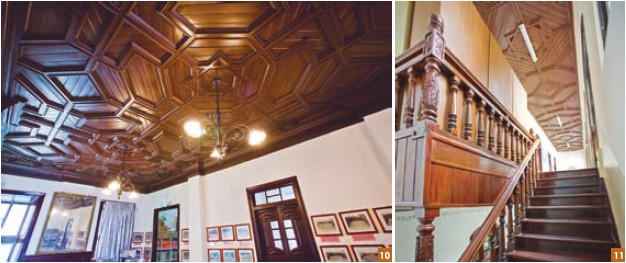 The riverport around which Dadaocheng developed was key to the rise of today's metropolis. In the port's heyday, today's Guide St. was referred to as “yanglou jie” or the “street of Western mansions.” Just half a kilometer long and 4 meters wide, Guide St. nevertheless harbors an illustrious past.
The riverport around which Dadaocheng developed was key to the rise of today's metropolis. In the port's heyday, today's Guide St. was referred to as “yanglou jie” or the “street of Western mansions.” Just half a kilometer long and 4 meters wide, Guide St. nevertheless harbors an illustrious past.
Government institutions and the residences of wealthy merchants were clustered here at the end of the Qing Dynasty. With each step, awestruck locals saw buildings of a style rarely if ever seen before; the extravagant Western architectural models included the telegraph academy, telecommunications office, police precinct headquarters, the large-scale factories of Western trading firms, the consulates of numerous faraway lands, the residence of Li Chun-sheng, and on and on. The sharp-eyed visitor of today will notice how high off the ground the buildings' foundations are; this offered protection from flooding by the moody Tamsui River, of which the shore was much closer during those times. Today, many, if not most, of the grand old edifices are gone, but those left speak well of a period of unbounded energy and confidence. One splendid example is the old Chen Tian-lai Residence, built in 1920. Chen was a successful tea merchant, founder of the Jinji Tea Co. His home, now a city heritage site, was modeled on the European/Chinese architectural fusion that was born in Xiamen, extremely popular amongst Chinese merchants successful in international trade in the colonial days.Information Li Chun-sheng Memorial Church
Add: No. 44, Guide St.
Dadaocheng Church
Tel: (02) 2553-9741
Add: No. 40, Ganzhou St.
Koo Family Salt Hall
Add: No. 9, Lane 303, Guisui St.
Chen Tian-lai Residence(Jinji Tea Co.)
Add: No. 73, Guide St.
Transportation:
Public Bus: Take No. 206, 274, 601 to the stop at the
corner of Yanping N. Rd. and Nanjing W. Rd.
MRT: A short walk from Shuanglian Station on the
Tamsui Line
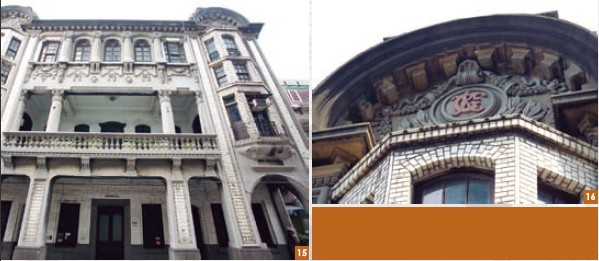 In the looks of these proud old edifices, the features of the past still survive. They are now playing a role in the emergence of a brand-new era and new styles in creativity. On a visit to and through Dadaocheng, you'll see how tradition quietly lives on in a place enjoying an ongoing dialog between history and modernity.
In the looks of these proud old edifices, the features of the past still survive. They are now playing a role in the emergence of a brand-new era and new styles in creativity. On a visit to and through Dadaocheng, you'll see how tradition quietly lives on in a place enjoying an ongoing dialog between history and modernity.

![Taiwan.gov.tw [ open a new window]](/images/egov.png)
